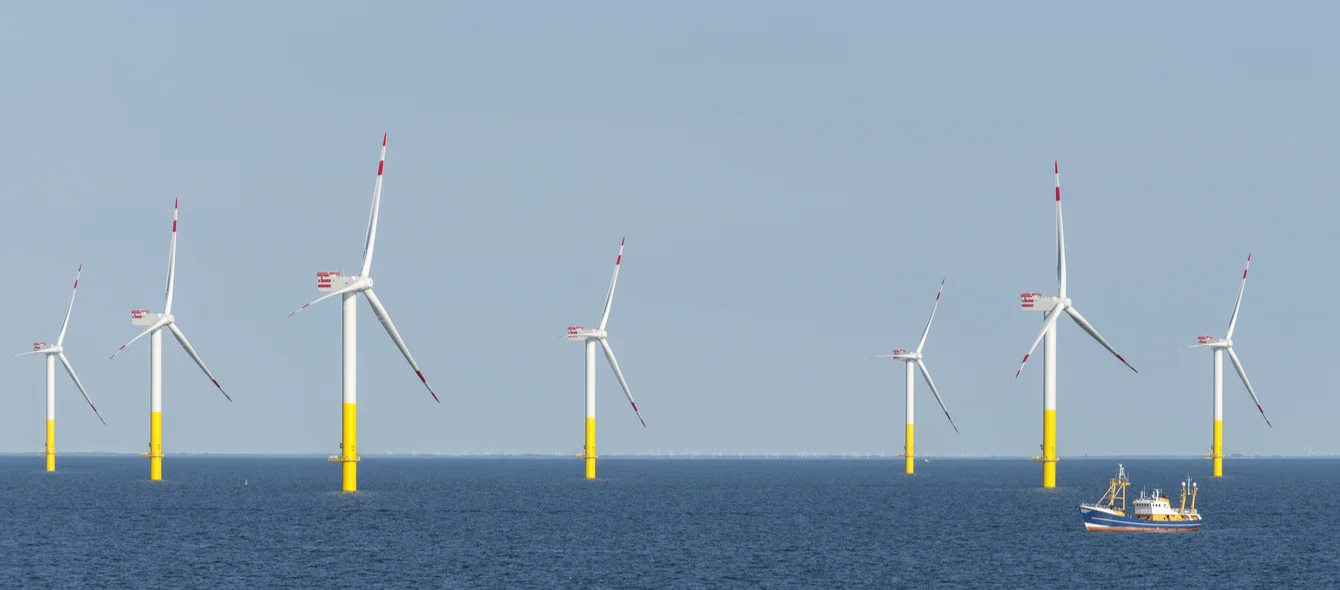The Albatros and Borkum II North Sea wind farms bring closure to the first chapter of the offshore wind industry’s young history. These were the last wind farms out at sea that could be built without participating in tender rounds. As planned, three percent in generation capacity have been added since the end of 2019. Since July, the German wind farms in the North and Baltic Sea have had the capacity to put 7,760 megawatts (MW) on the system. This gives Germany the world’s most powerful fleet of offshore wind farms after the United Kingdom.
However, the country will plateau at this level for the time being. No wind farms are currently being built – not even foundations for new turbines. But this is set to change really soon.
Status Quo of German offshore wind industry
New expansion phase in 2022
The next wind turbine out at German seas is slated to take up operation in 2022. This marks the year in which the first projects of the second phase, which placed winning bids in the 2017 and 2018 auctions, are scheduled for completion. The RWE Renewables Kaskasi wind farm is expected to make the start. The investment decision on the 342 MW project 30 kilometres north of the North Sea island of Heligoland was reached in April. Current plans envisage two wind farms north of the Baltic Sea island of Rügen with a total capacity of approximately 250 MW following suit.
All the wind farms of the 2017/2018 tender round are expected to go online by 2025, increasing offshore wind capacity to 10.8 gigawatts (GW). Therefore, in view of the government’s goal of installing 20 GW of offshore wind power capacity by 2030 and 40 GW by 2040, the sector is likely to be on the cusp of a substantial upturn.
Sector dissatisfied with envisaged sites
The advance draft of the 2020 site development plan (SDP) already considers the expansion stages through to 2040. The sites for the additional 9.2 GW planned up to 2030 have already ben determined, with the tender rounds scheduled to begin next year. However, the modalities are yet to be established.
In a public statement, the Association of German Wind Farm Operators (BWO) and other sector organisations (BWE, VDMA, WAB and the German Offshore Wind Energy Foundation) welcome the fact that the SDP has been devised this early in the game. However, they feel that sites near the coasts have not been paid due consideration. They opine that the designated sites cannot be operated at a profit in light of the demands made by the national hydrogen strategy, which envisages hydrogen production using offshore wind power playing a major role.
Contracts for difference to enable reliable planning
The BWO et al. also see the need for an agreement on the modalities of the impending tender rounds. So far, the German “WindSeeG”, a law on the development and promotion of wind energy, stipulates introducing a second bidding component in the event of several zero cent bids. The sector organisations believe that this rule will increase both investment and electricity generation costs, driving up electricity prices. They feel that this will be detrimental to Germany as an industrial location and to climate protection if electricity-intensive industries move to countries with higher-CO2 electricity mixes.
The sector organisations propose introducing contracts for difference (CFDs) instead, as is common practice in the United Kingdom, France, Italy and Denmark. This involves offering wind farm operators a fixed payment for every megawatt hour of power produced. If they achieve a lower price for their electricity on the market later on, they are refunded the difference by the state. If their profit exceeds the fixed payment, they must pay the difference back to the state. Consumers benefit from the fact that only the operators submitting bids based on the lowest generation costs win a CfD, because the lowest bid wins. The advantage for the operators is a high degree of planning certainty.
Photo credit: Ralf Gosch, shutterstock.com
